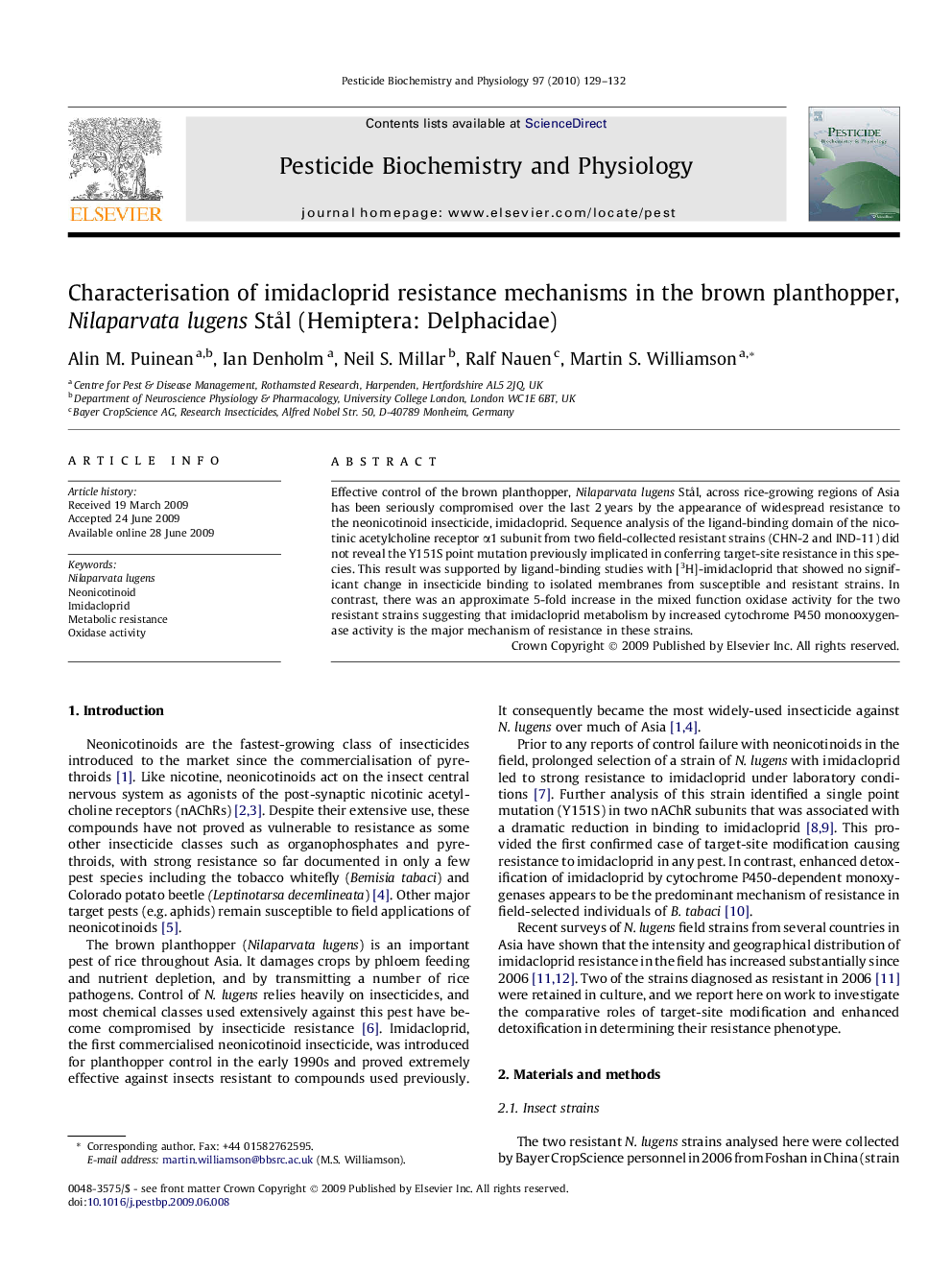| Article ID | Journal | Published Year | Pages | File Type |
|---|---|---|---|---|
| 2009788 | Pesticide Biochemistry and Physiology | 2010 | 4 Pages |
Effective control of the brown planthopper, Nilaparvata lugens Stål, across rice-growing regions of Asia has been seriously compromised over the last 2 years by the appearance of widespread resistance to the neonicotinoid insecticide, imidacloprid. Sequence analysis of the ligand-binding domain of the nicotinic acetylcholine receptor α1 subunit from two field-collected resistant strains (CHN-2 and IND-11) did not reveal the Y151S point mutation previously implicated in conferring target-site resistance in this species. This result was supported by ligand-binding studies with [3H]-imidacloprid that showed no significant change in insecticide binding to isolated membranes from susceptible and resistant strains. In contrast, there was an approximate 5-fold increase in the mixed function oxidase activity for the two resistant strains suggesting that imidacloprid metabolism by increased cytochrome P450 monooxygenase activity is the major mechanism of resistance in these strains.
